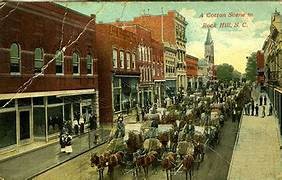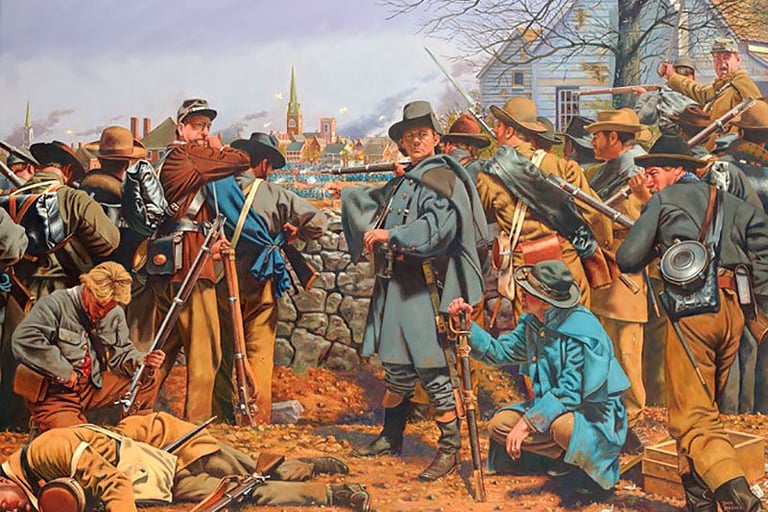The Past
COMMUNITY
History
Rock Hill is the most populous city in York County, South Carolina, United States, and the 5th-most populous city in the state.[7] It is also the 4th-most populous city of the Charlotte metropolitan area, behind Charlotte, Concord, and Gastonia (all located in North Carolina). As of the 2020 census, the city's population was 74,372.[8]
The city is located approximately 25 miles (40 km) south of Charlotte and approximately 70 miles (110 km) north of Columbia.
Rock Hill offers scenic riverfront views along the Catawba River and is home to numerous nature trails, restaurants, and thirty-one parks which are used for both national and local events. Its historic downtown consist of twelve contiguous buildings built as early as 1840 offering dining and retail options. The city is also home to three colleges, including Winthrop University, a public liberal arts university founded in 1886 which enrolls nearly 6,000 students annually.


Founding
Although some European settlers had already arrived in the Rock Hill area in the 1830s and 1840s, Rock Hill did not become an actual town until the Charlotte and South Carolina Railroad Company made the decision to send a rail line through the area. Originally, the railroad had hoped to build a station in the nearby village of Ebenezerville which was squarely between Charlotte, North Carolina and Columbia, South Carolina. When approached, however, the locals in Ebenezerville refused to have the railroad run through their village since they considered it dirty and noisy. Instead, engineers and surveyors decided to run the line two miles away by a local landmark. According to some, the engineers marked the spot on the map and named it "rocky hill."[9]: 26
Some of Rock Hill's early founding families—the White family, the Black family, and the Moores—believed that having a rail depot so close to them would be advantageous, so they decided to give the Columbia and Charlotte Railroad the right of way through their properties. As they were the three largest landowners in the area, this settled the matter. George Pendleton White contracted with the railroad to build a section of the line. Construction began in 1848. The first passenger train arrived on March 23, 1852. A few weeks later, on April 17, 1852, the first Rock Hill Post Office opened.[9]: 26–28
Now that Rock Hill had a name, a railroad station, and a post office, it began to draw more settlers to the area. Captain J. H. McGinnis built a small general store near the station in 1849 or 1850 to provide supplies for the construction and railroad workers.[9]: 27–28 Templeton Black, who had leased the land to McGinnis, decided to devote some of his other adjacent land to building a larger town. He hired a local surveyor, Squire John Roddey, to organize a main street. Black sold his first plot of land along that street to Ira Ferguson for $125 a few weeks before the post office opened; other businessmen bought plots quickly after that.[9]: 28
Rock Hill Academy, the first school in Rock Hill, opened in September 1854. Despite its official name, most residents referred to it as the Pine Grove Academy after the pine grove it was located in. Ann Hutchinson White, wife of George White, donated the land to the school after her husband's death. The school had 60 male pupils in 1856; a school for girls was later opened in the same place.[9]: 28
Prior to 1857, the Indian Land Chronicle was Rock Hill's first newspaper. It was renamed The Rock Hill Chronicle in 1860.[9]: 33 Prior to 1860, Rock Hill had at least two doctors.[9]: 33
American Civil War
Shortly before the American Civil War began, a census had been taken of the population in York County where Rock Hill is located. Half of the district's 21,800 residents were enslaved people, integral to local cotton production. The 4,379 white males in the county formed fourteen infantry companies; some of the men joined cavalry or artillery units instead. By the end of the war, 805 of these men had died, and hundreds more were wounded. Men from Rock Hill and York County were involved in many of the major Civil War battles.[9]: 35
Due to its position on the railroad, Rock Hill became a transfer point for Confederate soldiers and supplies moving to and from the front. Since there was no local hospital, townspeople nursed sick and wounded soldiers in their homes. Refugees fleeing the coastal blockade or General Sherman's troops, also came to Rock Hill.[9]: 39


Beginning in the spring of 1862, local area farmers switched from cotton to corn in order to produce more food.[9]: 39 Records show that prices in Rock Hill changed frequently during the war, reflecting both shortages and the inflation of the Confederate paper money.[9]: 41
Confederate General P. G. T. Beauregard set up a temporary headquarters in Rock Hill on February 21, 1865.[9]: 41 He ordered the roads to Charlotte blocked to try to prevent General Sherman from reaching the city; Sherman ultimately went in a different direction.
When General Lee surrendered at the Appomattox Court House, it was actually a future Rock Hill resident who was responsible for waving the white flag. Captain Robert Moorman Sims, a farmer from Lancaster County, was sent by General James Longstreet to inform Union troops that the Confederate troops wanted a truce.[9]: 4



